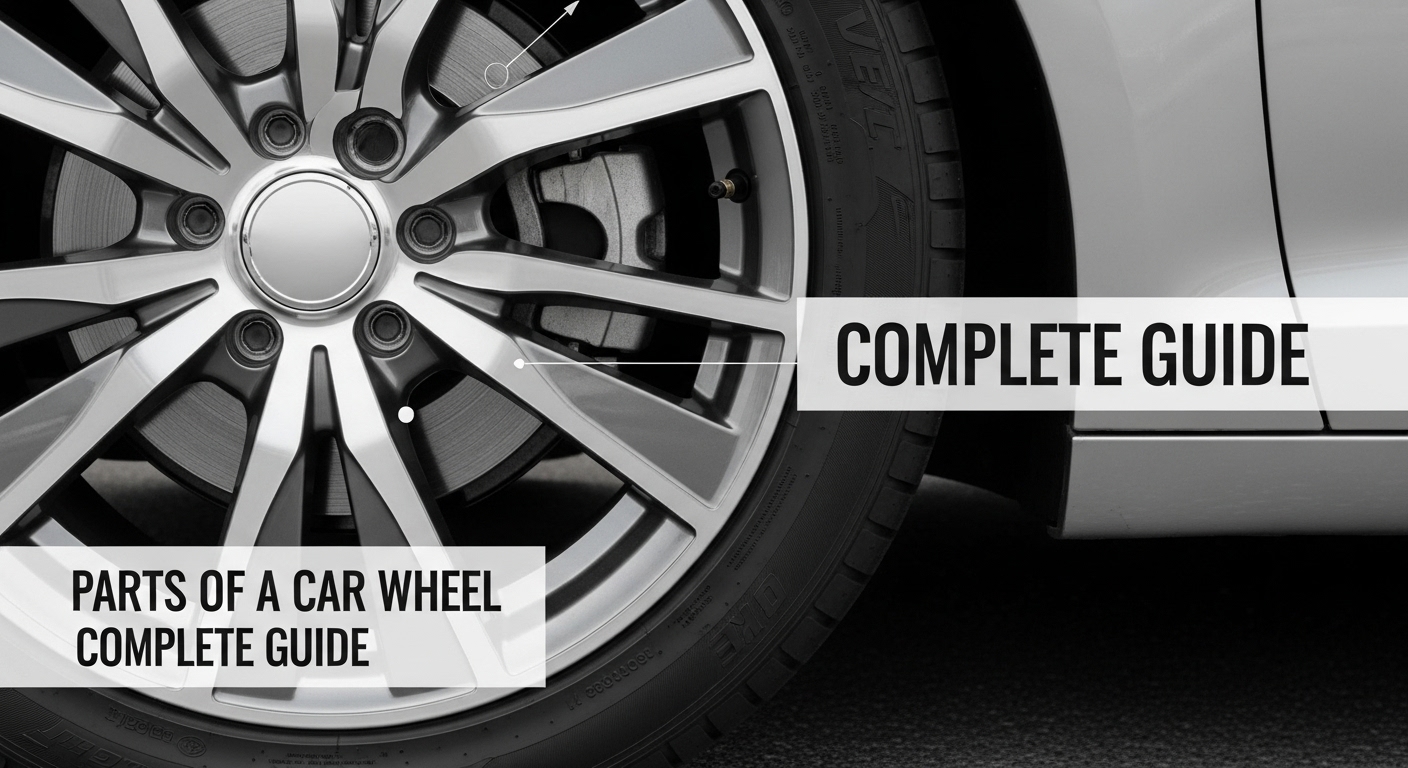Complete Guide to Parts of a Car Wheel: Types, Materials, and Maintenance Tips
Recognizing the Components of a Car Wheel
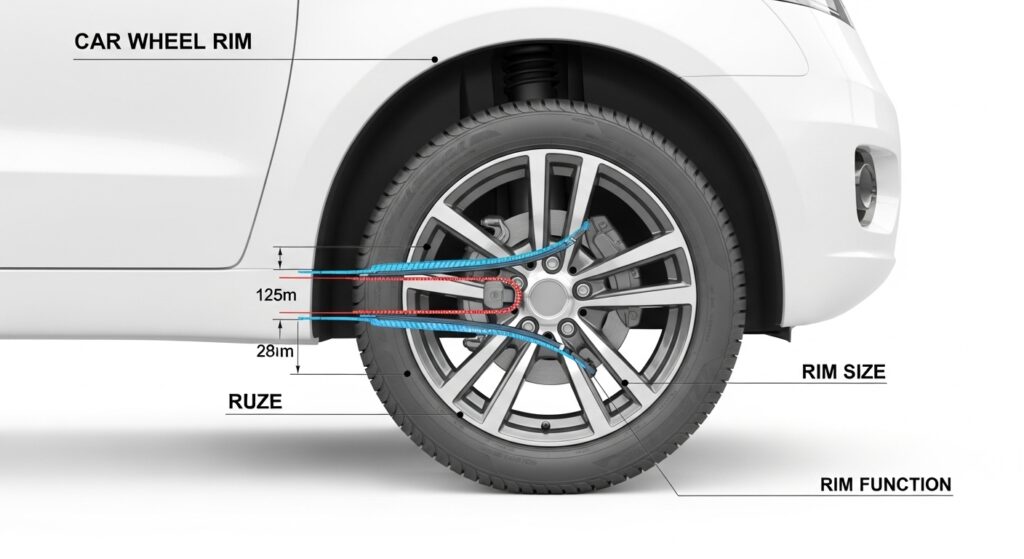
A car wheel is the most frequently neglected component of a vehicle. Arguably, it is the simplest part, but in reality it is far more complex as it consists of various components that support the vehicle’s weight, allow smooth movement, and provide stability and traction.
Automotive professionals and average drivers alike can benefit from understanding the parts that make up a car wheel. As a car enthusiast or a regular driver, knowing the components of a car wheel allows you to identify issues early and make safer decisions when it comes to replacing or upgrading parts.
The constant wear and tear experienced by car wheels from friction, heat, and road conditions leads to a decline in efficiency, uncomfortable driving experiences, or in some cases, significant safety risks. Each component is important as even small issues can have serious repercussions.
In this guide, we will examine all the components of a car wheel and go into detail on the rim and tire as well as wheel bearings and valve stems. In addition, we will cover the different types wheels used in modern vehicles, the materials they are manufactured from, and the best practices for maintenance.
After reading this article series, you will be well versed in the anatomy of car wheels. This knowledge can aid in early problem detection during self diagnostics, improve conversations with your mechanic, and reduce the costs for repairs or replacements done on the vehicle.
Let’s understand first why wheels matter so much in terms of a vehicle’s performance and safety.
Role of Car Wheels In Vehicle Performance
Car wheels affect the performance of a vehicle much more than drivers and passengers would like to admit. The wheels are not merely structural components providing a vehicle with mobility; they are crucial regarding handling, safety, fuel economy, and drivability. Knowing the significance of wheels helps in understanding the reason behind why they should be taken care of and the maintenance done on them, as well as knowing more about their components.
Load Management and Support
Like other road vehicles, cars possess supporting structures referred to as wheels. In addition to carrying the vehicle weight, the wheels also support the passengers and any added cargo. Together with the suspension and axle, the tires and rims form a system that distributes the load. Any component failure may cause loss of vehicle control or structural damage.
Grip and Traction
Grip is the interfacing feature of the road and tire surface. It is determined by the interaction of the tire tread with the road surface. Good wheel designs will maximize traction, especially in challenging weather conditions like rain, snow, or gravel. Slide traction can also be hampered with old or poorly designed car tires and increase the tendency of slipping and skidding.
Control and Steering
Your vehicle’s response upon turning the steering wheel is heavily dictated by the wheels. The wheels also bear the vehicle’s weight and when combined with it, the alignment changes the response sensitivity and performance to steering. Response to steering also changes when arms of the wheel are increased, together with misalignment, adding weight leads to heavy and unstable steering control.
Braking Efficiency
In vehicle dynamics, the performance of the wheels is significant for braking efficiency. To bring the vehicle to a stop, the brakes exert force to turn the wheels. Improper balancing of the wheels or worn tires can result in dangerously increasing the braking distance. Smoothing predictive brake performance requires proper wheel maintenance.
Fuel Efficiency
Some people may not be aware that how the wheels are designed may dictate the rate of fuel consumption of the vehicle. Alloy wheels are an example of lightweight materials that help reduce the fuel economy. Tyre inflation and balance also play a part as under-inflated and out-of-balance tyres increase rolling resistance.
Comfort and Vibration Absorption
Irregularities on the road will be absorbed by the tires and wheels of the vehicle. Comfortable maintenance allows wheels to optimize vibration damping, resulting in a smoother ride for passengers. Poor maintenance and imbalance of the wheels can accelerate wear of the vehicle’s suspension components, causing bumpy unpleasant experiences for the occupants.
Conclusion
It is evident that car wheels are more than circular elements. They intricately influence every factor of a car’s driving, responsiveness and overall performance. This is why appreciating the parts of a wheel is important, especially for car owners who appreciate safety, performance and cost-efficiency.
Main Parts of a Car Wheel
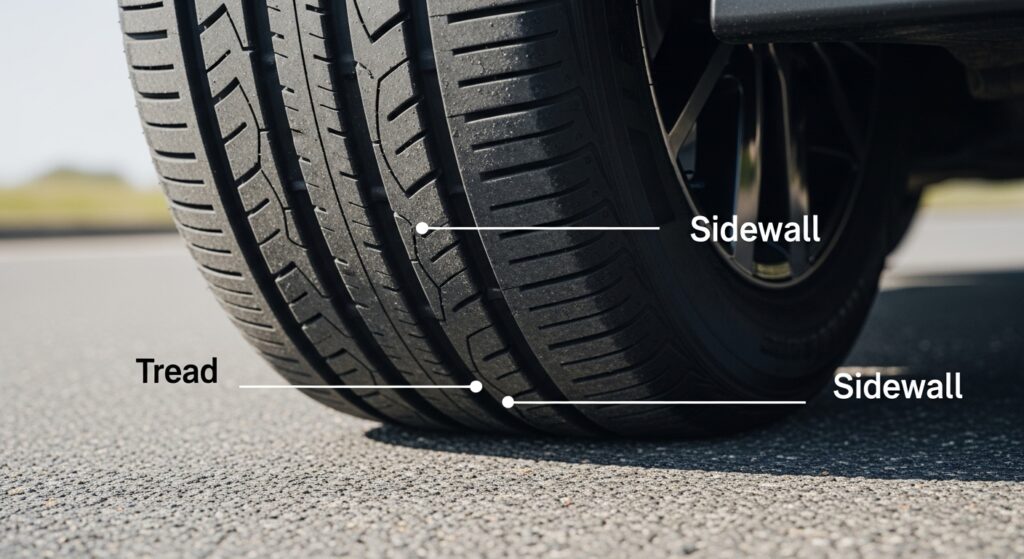
While a car wheel may seem to be a singular piece from the outside, it actually consists of various interconnected components. Each of these sections plays an important role in enhancing the performance, safety and comfort of the vehicle. In this section, we will go through the most relevant parts of a typical car wheel, and see how they combine.
Rim
The rim is the most external part of the wheel. It serves as the outer boundary of the wheel and consequently, serves as the mount for the tire. It also provides a Permacure Surface for the tire bead and therefore assists in the maintenance of the tire’s pressure and alignment. Like the rest of the wheel, rims are available in various sizes and materials. Alloy and steel being the most common. The design and weight of the rim can influence both performance as well as fuel economy.
Functions of the Rim:
- Integrates the tire onto the wheel
- Aids in maintaining the tire’s internal pressure
- Influences handling and ride comfort of the vehicle
Tire
As the rubber part of the vehicle, the tire touches the road directly. Its main responsibility includes providing traction, managing road shock, and bearing the vehicle load. Depending on the driving conditions, tires can be classified as all-season, winter, or performance, and they differ in tread patterns, sizes, and rubber compounds.
Functions of the Tire:
- Maintains effective traction and braking
- Dampens the impact of minor road faults, enhancing comfort during travel
- Drives the vehicle output to the road
Hub
The hub forms the shape of the wheel’s center section, which fits onto the axle of the vehicle. It acts as a mounting point for the rim and contains wheel bearings as well as the brake disc (or drum). The hub integrates critical alignment and rotation features necessary for the proper functioning of the wheel.
Uses of the Hub:
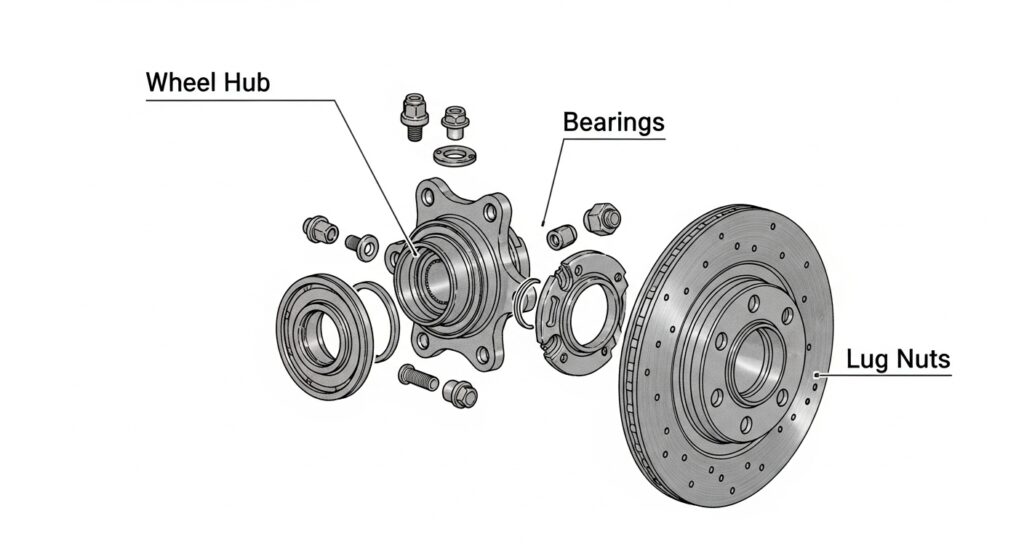
- Links the wheel to the axle.
- Mechanical part of the hub holds the wheel bearings.
- The braking system is supported.
Wheel bearings
As a part of the hub, wheel bearings r positioned in the center of the wheel and are very small and precise. Bearings enable and ease the rotation of the wheel for the vehicle. Broken bearings can lead to noise reduction, abnormal tire wearing, and can cause dangerous situations while driving if not fixed quickly.
Designed Functions of Wheel Bearings:
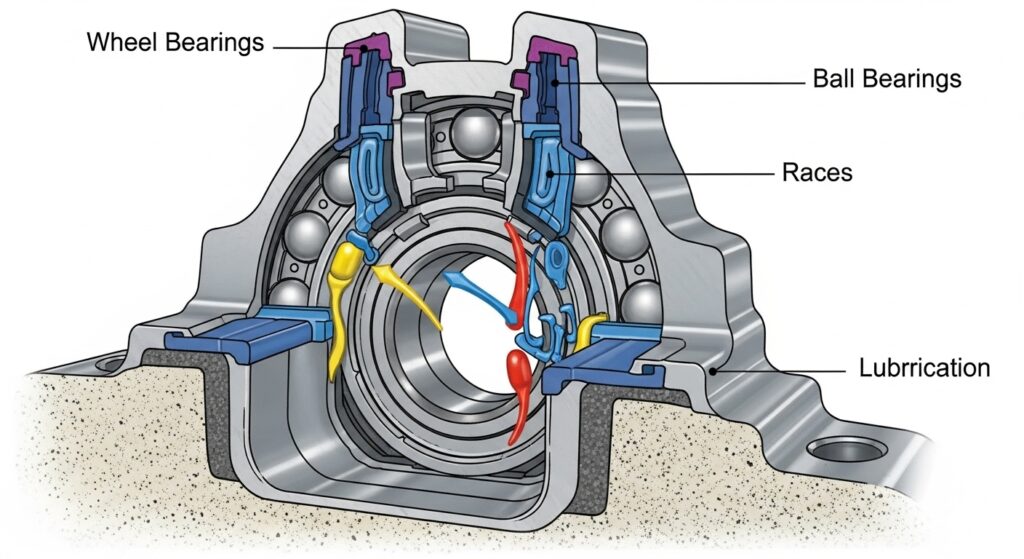
- Provide for rotation of the wheel without any impediment mechanically.
- Wheel friction with axle is reduced significantly.
- Stability and controlling of the vehicle is increased.
Tire Valve Stem The tire valve stem is a part of a rim which air can be added or released from a tire, thus protruding in the rim. Generally, it contains core valves that are sprung shut. To stop dust, a cap is placed on it. If the tire cap is broken, air can leak from it and a defender tire can result, which means its pressure will be less leading to decrease of efficiency and safety as well.
Functions of the Valve Stem:
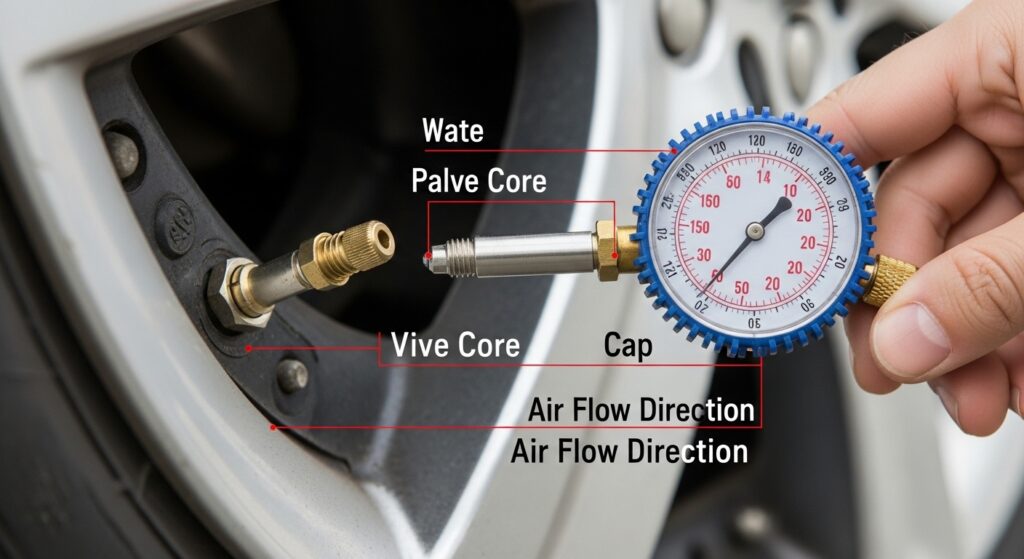
- Enables inflation and deflation of the tire.
- Preserves internal air pressure.
- Prevents air escaping through its seal.
Lug Nuts/Bolts
Lug nuts (or bolts in some cars) are fasteners that secure the wheel to the hub. They are threaded onto wheel studs and must be tightened to specific torque specifications. Improperly fastened lug nuts can result in wheel wobbling or detachment while driving.
Functions of Lug Nuts/Bolts:
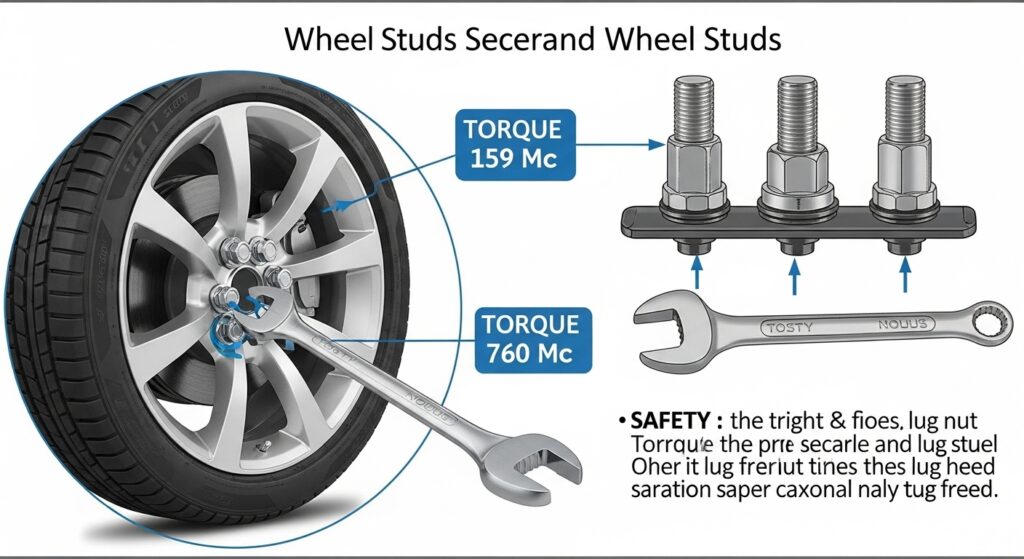
- Fasten the wheel to the hub assembly.
- Control proper wheel alignment and rotation.
- Eliminate unsafe conditions due to loose wheels.
Wheel Cover / Hubcap (Optional)
Some vehicles come with a hubcap or wheel cover designed to protect lug nuts from dust and moisture or for aesthetic purposes. Although not mandatory for vehicle function, these parts can enhance the vehicle’s appearance while offering minimal protection to the wheel components.
Functions of the Wheel Cover:
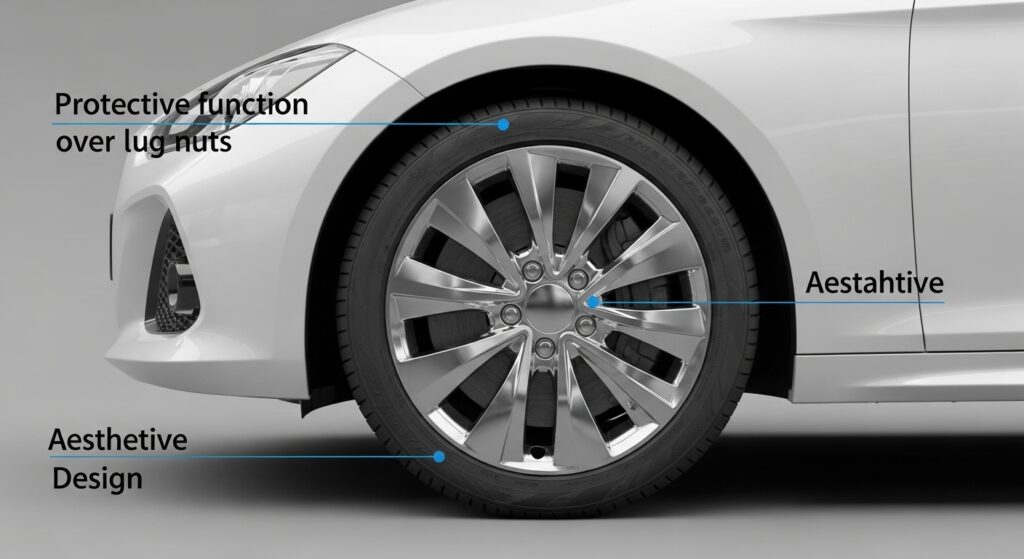
- Dirt and debris protection
- Aesthetic enhancement
- Replaceable without major repair
Summary
The various parts of the vehicle, from the external tire and rim to the internal bearings and valve stem, operate in tandem to provide safe, smooth, and efficient vehicle operation. Each part is crucial, and knowing how they work can help in diagnosing problems and improving long-term maintenance of the wheels.
Different Styles of Car Wheels
All car wheels share the fundamental functions of allowing movement, supporting the vehicle’s weight, and providing a smooth ride. However, variations exist in the construction of the wheels. The materials and manufacturing methods used have a significant impact on performance, durability, cost, and even aesthetics. Familiarity with the various styles of car wheels can assist in selecting according to the driving habits, road conditions, and budget.
The following are the three main types of car wheels found on modern vehicles:
Steel Wheels
The steel wheel type is the most simple and strongest. They are produced by stamping and welding heavy duty steel. These wheels are generally bulkier than alloy or forged wheels, and tend to be used on cheaper cars or in regions where the roads are rough, long lasting durability is prioritized over stylistic appeal.
Advantages:
- Strong and long-lasting. • Resistant to cracking and bending. • Cheaper than alloy wheels. • Great option for use during winter and off-road conditions.
Disadvantages:
- Reduced overall fuel economy because of weight. • Basic appearance, often masked by hub caps. • Not intended for performance vehicles.
2.Ally wheels
Ally wheels can be used to refer to wheels which aluminum (or sometimes magnesium) and other metals. They are much more physically light then steel wheels making them a better fir for high performance handling. Sustaining the balance of looks, efficiency and performance, most modern cars come standard with alloy wheels.
Advantages:
Enhances acceleration as well as fuel economy.
Smoother braking results in less wear on brakes.
Available in various fashionable styles.
Improved performance and handling on well-maintained roads.
Disadvantages:
Higher price compared to steel wheels.
Increased likelihood of cracking or cosmetic damage from rough road conditions.
Forged Wheels
Forged wheels are made from a process that uses compressing metal and applying great amounts of pressure. As a result, the wheel becomes extremely strong and incredibly lightweight. Forged wheels are often found in high-end vehicles such as sports cars and luxury models.
Advantages:
More durable and lighter compared to cast alloy wheels.
Greater control and precision with a vehicle.
Increased durability in comparison to wear and stress.
Disadvantages:
Extremely high cost.
Overkill for everyday driving.
Choosing the Right Type
When choosing the right wheel, it depends on individual prioritizes. Those looking for durability and lower cost would find steel wheels to be a safe choice. For improved performance and fuel efficiency, alloy wheels provides the best compromise. Forged wheels are unmatched when it comes to strenght and responsiveness, making them ideal for racing or luxury performance. However, this comes at an extremely high price.
Common Materials Used in Automotive Wheels
Different materials that are used to construct automobile wheels, each differing their advantages and disadvantages. The choice of material affects the aesthetics and cost of the wheel, as well as its functionality, weight, heat dissipation, and strength. Regardless if you are driving an economical sedan or an expensive sports car, the material used for the wheels is critical.
The following are the most common materials in manufacturing car wheels:
Steel
Steel remains the primary and most traditional metal for constructed wheels. Steel wheels, made from a combination of iron and carbon, have their durability, albeit they tend to be quite heavy.
Key Characteristics:
- Impact resistance and overall strength is extremely high for steel
- Fuel efficiency might be impacted due to the weight
- Cost-effective and can be easily fixed if damaged.
- Range of use include base models and winter tires.
Steel wheels excel in off-road scenarios where appearance and weight become secondary priorities.
Aluminum Alloy
Modern automotive wheels are largely manufactured using aluminum alloy. In order to enhance their strength, aluminum alloys are produced by adding small quantities of other metals like nickel or magnesium.
Key Characteristics:
- Improvements on acceleration and fuel economy due to the light weight.
- Excellent heat dissipation leads to reduced brake wear.
- Available in multiple styles and resistant to corrosion.
- Regionally accessible, though pricier relative to steel.
Finding alloy options brings aluminum alloy wheels to the forefront as they optimally blend aesthetics and performance with cost.
Alloy Magnesium
Usually fitted in high-end or performance vehicles, magnesium wheels, or mag wheels, are lighter than aluminum alloys.
Key Characteristics:
- Under extreme conditions, they perform exceptionally.
- Requires careful upkeep to prevent corrosion.
- Lighter designs lead to enhanced speed and better handling.
- For general or daily use, they are fragile and expensive.
Although their lightweight designs make them ideal in motorsports, magnesium wheels don’t suit daily driven vehicles due to their costs and fragile nature.
Carbon Fiber
One of the most technologically advanced wheels in the market, carbon fiber wheels are lightweight and made from carbon composite materials providing them with a high strength-to-weight ratio.
Key Characteristics:
- Hard to obtain and easy to break.
- Pricey, only available to luxury/supercars.
- For supercars and high-end racing cars, every extra ounce reduced weight adds makes a big difference.
These wheels have the best price-to-performance ratio for racing applications.
Final Remarks
Your budget and driving habits will dictate the choice in wheel materials. Steel is the cheapest option and the most durable. Aluminum alloys provide a good aesthetic appearance and performance. Carbon fiber and magnesium are only for professionals and enthusiasts who need peak performance and are best suited for them. Knowing these materials will help you make informed choices when upgrading or replacing the wheels on your car.
Maintenance of Car Wheels
Daily driving habits and the temperature changes caused by weather conditions create constant stress on car wheels. Regular maintenance not only helps prolong the life of the wheels and tires, but also improves handling, fuel efficiency, and safety. Neglecting the care of wheels can lead to dangerous driving conditions, lowered performance, and costly repairs.
To keep your car wheels in excellent condition, here are some essential maintenance tips:
Regular Checks on Tire Pressure
One of the most important maintenance tasks, albeit simple, is maintaining proper tire pressure. Safety, uneven wear, and fuel economy are all affected by under or over-inflation.
Tip:
Make sure to check tire pressure at least once a month with a tire pressure gauge and always before long trips. Recommended pressure levels can be found in the vehicle’s owner manual or on the sticker inside the driver’s door.
Wheel Alignment
Adjustment of the angles at which the tires contact with the road is referred to as wheel alignment. Misalignment can cause uneven tire wear, steering difficulties, reduced handling performance.
Tip:
Get an alignment check at least once a year or if there is noticeable pull to one side, asymmetric tire wear, or a vibrating steering wheel.
Tire Rotation
Tire rotation is the practice of changing the positions of tires placed on a vehicle so that the wear is even over all tires. Balanced handling and extension of tire life is achieved through this practice.
Tip:
Follow vehicle manufacturer’s recommendations or rotate tires every 5,000 to 7,000 miles. For convenience, many drivers schedule these rotations with regular oil changes.
Wheel Balancing
Suspension wear and tear, uneven tire wear, and vibrations while driving, especially at high speeds, can all occur as a result of unbalanced wheels.
Tip:
It is recommended to balance the wheels whenever new tires are fitted or if, during driving, there are unusual vibrations or noise experienced.
Damage Visual Inspection
Wheel and tire inspection for visible damage must include checking for cracks, bulges, dents, or punctures. These inspections are essential because they flags critical problems that require deeper investigation.
Tip:
Inspecting your wheels after hitting potholes and curbs will help you catch any bends or scuffs. Detecting issues in good time aids in preventing higher repair costs.
Maintenance and Cleaning
The presence of brake dust, road salt, and grime can mark wheels and enhance corrosion over time. Existing grime must be cleaned in a timely manner to preserve your wheels’ cosmetic value.
Tip:
The prevention of corrosion must include regular washes with soft brushes and non-acidic cleansers. Both the front face and inner barrel must be scrubbed for complete cleanliness.
Replace Worn-Out Components
Prompt actions must be taken to replace worn out valve stems, lug nuts, and wheel bearings. Replacing these small components enhances performance and promotes safety.
Tip:
Parts that have undergone wear and tear must be immediately replaced. Delays in replacement pose the risk of severe consequences, including air and vibration leaks, as well as extreme cases of wheel detachment.
Conclusion
Maintaining a vehicle’s wheels is an integral part of its maintenance schedule. Implementing these easy-to-follow practices can optimize vehicle efficiency, promote road safety, extend tire life, and enhance fuel economy. Spending a little time each month on maintenance tracking helps in avoiding significant repair expenditures later on.
Conclusion
While wheels may seem like insignificant and often ignored parts of a car, they remain an essential component with respect to safety, functionality, and performance as discussed earlier. To obtain seamless driving, adequate traction, and efficient braking, all the parts, namely, the tires and rim, hub, bearings, and valve stem, need to function in unison.
Understanding how revolving wheels enhance handling, fuel efficiency, and the overall driving experience allows better selection based off driving habits and vehicle needs. Steel wheels offer durability while alloy wheels provide light weight and style. Further options include forged and carbon fiber wheels. Knowing the distinctions enable better informed choices.
Equally significant is proactive maintenance. Prevention of damage and many other prevalent issues requires checking the tire pressure, wheel alignment, balance, and rotation. Proper maintenance of the rims and tires not only improves wheel safety, but prolongs the life of the components which significantly enhances safety on the road.
In conclusion, knowledge of the various components of a car wheel and their maintenance augments your capabilities as a driver. Such knowledge allows you to notice problems ahead of time and avoid miscommunication with mechanics, which also saves you money. Most importantly, it makes your journeys safer and more enjoyable.
Take a moment to look at your car’s wheels. Inspecting tire pressure, scheduling alignments, and cleaning off brake dust are just a few examples of how attending to details makes a difference.
You can drive confidently and safely knowing you possess a deeper understanding of your vehicle’s most essential parts. Thank you for reading this complete guide on car wheels.
